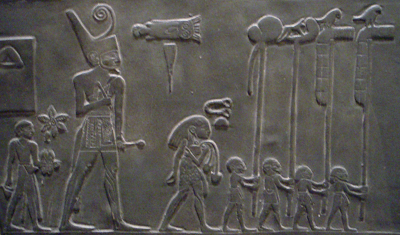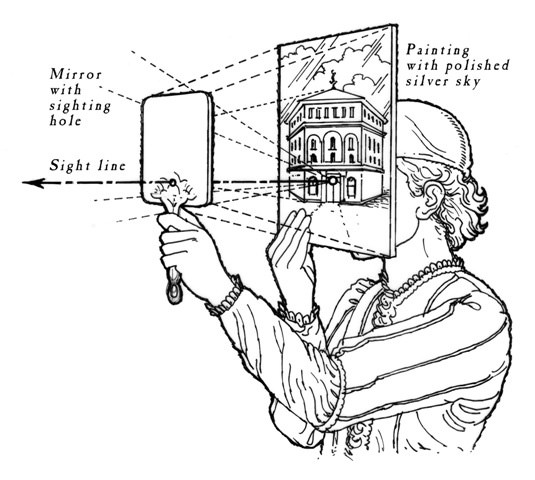For centuries, both artists and mathematicians have been driven to understand the world and tried to represent it through their trade. For mathematicians, understanding the world is done by discovering then creating patterns, relationships, and models founded within the world. Artists on the other hand look to represent the world a little differently. They create work based on the direct look, feeling, or aspects. All and all as humans we seek to understand the world we live in.
One-way artists choose to represent the world is through creating pieces that directly resemble a scene from real life. Mathematics is used by artists who wish to obtain a 3-dimensional look within their piece. The system in which illusion and depth are created on a two-dimensional flat surface is called linear perspective. This tool allows art to have correct proportions and depth when looking at the painting from the singular point the artist intended.

One critical skill for painters, sketchers, illustrators, and all artists alike is the ability to take a scene or object from our three-dimensional world and capture and create it within a two-dimensional surface. Although this is a skill every artist learns and is introduced to early on it is not always an easy task. Searching throughout art history we find that in Egyptian art they did not have a linear perspective in their artwork. This makes their art flat and two-dimensional. Without having a linear perspective to create a focus on an object they instead used the hierarchical scale to size their figures. Hierarchical scale allowed them to show the importance of objects, the larger the object the more important it was (Galloway, 2008).

Hierrarchical scale, from the Narmer Palette
Paraoh is depictured much bigger than the soliders around him.
One critical skill for painters, sketchers, illustrators, and all artists alike is the ability to take a scene or object from our three-dimensional world and capture and create it within a two-dimensional surface. Although this is a skill every artist learns and is introduced to early on, it is not always an easy task. Searching throughout art history we find that Egyptian art did not have a linear perspective in their artwork. This makes their art flat and two-dimensional. Without having a linear perspective to create a focus on an object they instead used the hierarchical scale to size their figures. Hierarchical scale allowed them to show the importance of objects, the larger the object the more important it was (Galloway, 2008).
It was not until the Renaissance era that we began to see a true geometric understanding and the use of linear perspective within art. This allowed artists to capture real-world scenes with correct proportions and ratios. It was a tool first created by Filippo Brunelleschi in the year 1425. Filippo Brunelleschi was a famous architect who wanted to create a 2-dimensional drawing of his work, the Florence Baptistery. To create a perfect replica of the beautiful building onto a 2-dimensional surface was a difficult task that had never been done.
He went about this recreation by standing in front of the building with a mirror, straightedge, pencil, and his drawing. The drawing had a hole punched in the center. Filippo would then hold up the drawing against his head positioned so his eye could see out the hole, with the drawing facing the building. When he would hold up the mirror, he was able to see his drawing against the actual building, making adjustments to the drawing where needed.After this linear perspective was not only used by the architect to depict their building but was used to create depth and realness within painting and drawings. This is no longer the technique used by artists wanting to achieve correct proportions. Now artists only need a straightedge to achieve the linear perspective.

Through manipulating the applet above we can discover more about taking a 3-deminsional object and depicting it onto a 2-deminsional plane.
Let’s first watch a video about the steps an artist uses to create a drawing using linear perspective.
Now we have learned that linear perspective starts with a horizon line which is a horizontal line through the piece. There is also the vanishing point, which is a fixed point somewhere along the horizon line. This point has the name vanishing point because it will be where everything within the work leads back to and “vanishes”. Next converging lines are created connecting the object being created to the vanishing point.
These converging lines then create a triangle from the vanishing point, the starting point of the object, and the ending point of the object as shown below. Another triangle is then created within this existing triangle when the back of the object is established. This is done by making a line parallel to the top of the front of the cube.

Math is then called in to play to prove that the width of this line is defined by the perspective line you drew from the object’s front corners. Which can be proved through using Thales’ Intercept Theorem.

(Bohmermann, 2018)
From this applet tell see Thales' theroem holds for all triangles with paralell bases.
The visual depth of a two-dimensional surface cannot exist without the use of linear perspective. This creates a great need for this form of mathematic art. While canvas, paper, and computer screens are all two-dimensional there is a great benefit that comes from the use of lines to create depth and space. This allows an artist to create a building, landscape, and more. There are equally useful applications in the math world as well. Using linear perspective makes representing three-dimensional geometry possible to represent 2-dimensionally in a very easy-to-understand format. Audiences have so much to gain from the application of perspective that gives so much more depth to any linework in both art and mathematics.
Below you can explore another way linear perspective is not only used on paper or canvas. In this video, you can begin to understand a new type of perspective called anamorphosis and how math is called into action to create art on cement.